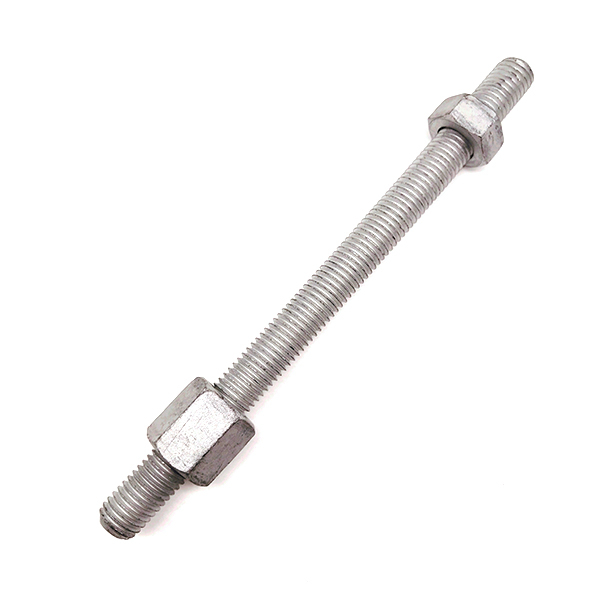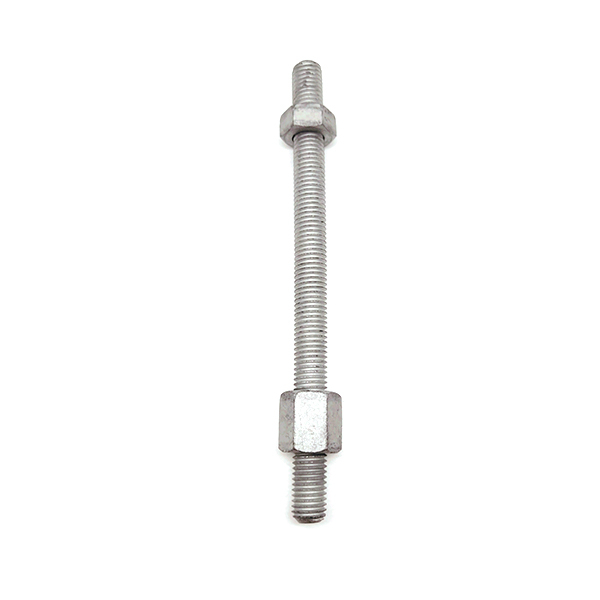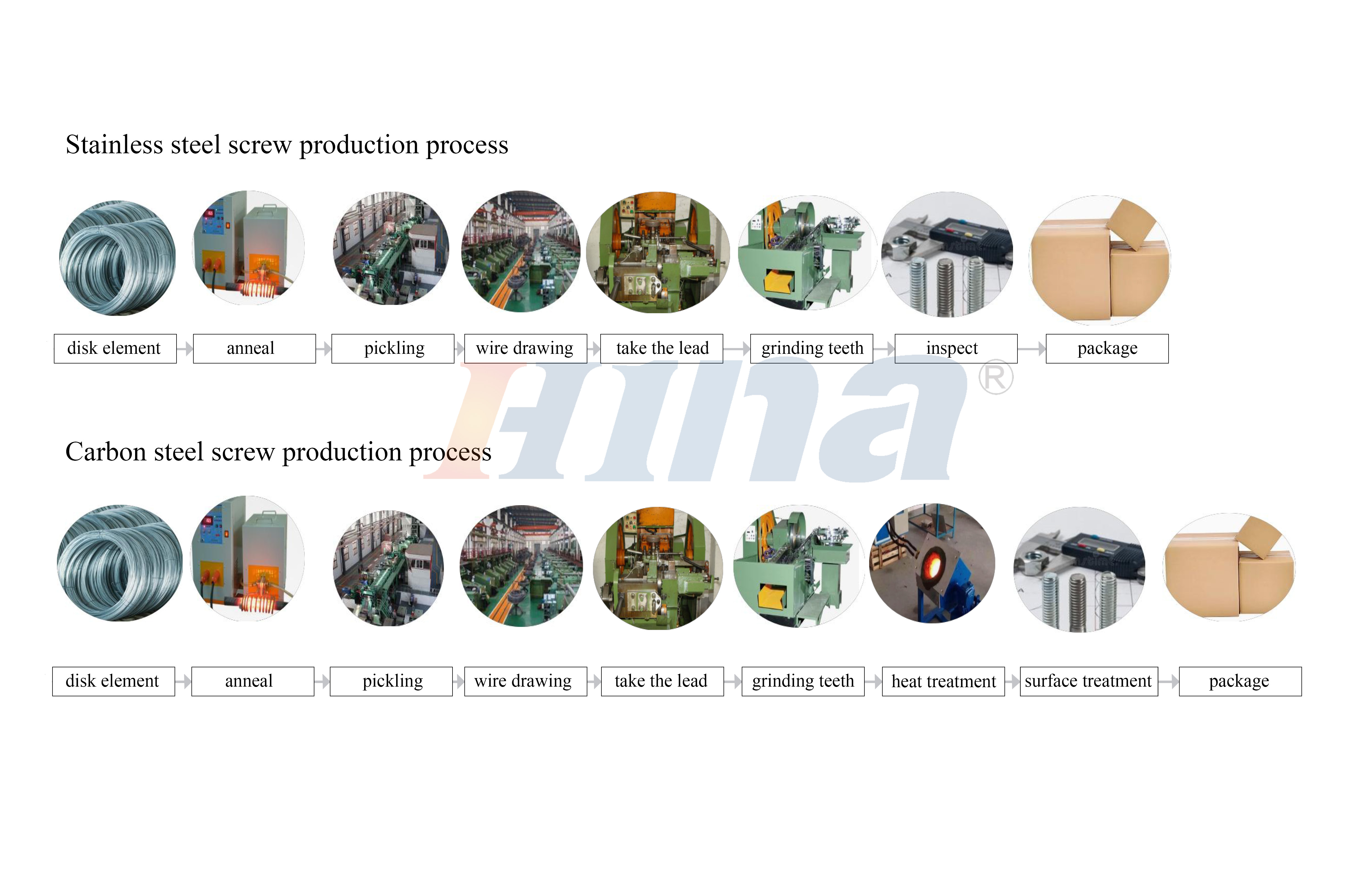- All
- Product Name
- Product Keyword
- Product Model
- Product Summary
- Product Description
- Multi Field Search
| Availability: | |
|---|---|
| Quantity: | |





HNF
HNF2024121004
Carbon steel thread rods are mainly made of carbon steel. Carbon steel is an iron-carbon alloy with a carbon content of 0.0218% - 2.11%. In addition to carbon, it may also contain a small amount of impurity elements such as silicon (Si), manganese (Mn), sulfur (S), phosphorus (P), etc. The thread rod has threads, and its shape is usually a long rod-like structure. The threads are distributed along the rod body and are used for mechanical purposes such as connection and fastening


Construction field: widely used in the reinforcement and connection of building structures. For example, in concrete structures, carbon steel tooth rods can be used as tension bolts to fix the formwork to ensure the shape and position of the formwork during concrete pouring. At the same time, in steel structure buildings, they are also used to connect steel beams, steel columns and other components to strengthen and stabilize the structure.
Machinery manufacturing industry: as a connecting component of mechanical parts. In machine tools, engineering machinery and other equipment, carbon steel tooth rods can connect different parts together. For example, between the bed and the workbench of a machine tool, the position of the workbench can be accurately adjusted by the cooperation of carbon steel tooth rods and nuts, and its stability during the working process can be ensured.
Strength characteristics: Carbon steel thread rods have a certain strength and can withstand a certain amount of tension and pressure. Its strength increases with the increase of carbon content. For example, medium carbon steel thread rods have higher strength than low carbon steel thread rods and can be used in fastening connections that require greater force, such as the connection of some supporting components in building structures.
Hardness performance: The hardness is moderate, and its hardness can be further increased by heat treatment (such as quenching and tempering). However, if the hardness is too high, the toughness of the thread rod may be reduced and brittle fracture may occur easily. Appropriate hardness makes it difficult for the thread to be damaged when tightening nuts and other operations.
Good processing performance: Carbon steel materials are easy to cut and can be used to manufacture various specifications of thread rods. For example, in a machining workshop, carbon steel raw materials can be processed into thread rods that meet the requirements through turning, milling and other processes, and the size, pitch and other parameters of the thread can be adjusted as needed during the processing.
Haina is committed to providing customers with high-quality stainless steel standard fasteners and professional services to meet various engineering needs. We have a large amount of spot inventory to ensure fast delivery and save you waiting time. In addition, we provide the following value-added services to help your purchasing experience:
1. Free samples: provide samples for customer testing.
2. 3.1 Test report: quality test report that meets international standards.
3. Video factory inspection: support video factory inspection to demonstrate production process and quality management.
Advantages
- Sufficient inventory: quick response to order requirements.
- Quality assurance: strict quality control to ensure product reliability.
Haina is committed to providing efficient and high-quality fastener services.

What is the purpose of a double stud?
The main function of a double-ended stud is to provide a strong double-sided connection, which is suitable for structural parts that require high-strength fixing. One end of the double-ended stud is screwed into the main material, and the other end is connected to other components through a nut, so that it can remain stable under high pressure or vibration environments. It is widely used in occasions such as machinery, automobiles, and construction that require disassembly and maintenance, such as fixing engines, flanges, and heavy machinery and equipment. The double-headed stud design makes loading and unloading easier, and there is no need to frequently replace the main material, which effectively extends the service life.
What type of bolt commonly used in construction that is threaded in both ends?
The double-ended threaded bolt commonly used in construction is Double-Ended Stud, also known as Stud Bolt. This bolt has threads on both ends and no head in the middle. It is usually used to connect structural members that need to be fixed on both sides, such as steel beams, columns, or pipe flanges. During installation, one end is screwed into the main structure or fixed base, and the other end is connected to other components through a nut. Double-headed studs have high strength and are suitable for bearing heavy loads and high pressures. They are commonly used fasteners in construction, bridges, and heavy equipment installations.
What is the size of a thread rod?
Threaded rods come in various sizes, typically ranging from #4-40 (smallest) to 4 inches or more in diameter, and lengths from 1 foot to 12 feet or longer, depending on the application and standard.
Carbon steel thread rods are mainly made of carbon steel. Carbon steel is an iron-carbon alloy with a carbon content of 0.0218% - 2.11%. In addition to carbon, it may also contain a small amount of impurity elements such as silicon (Si), manganese (Mn), sulfur (S), phosphorus (P), etc. The thread rod has threads, and its shape is usually a long rod-like structure. The threads are distributed along the rod body and are used for mechanical purposes such as connection and fastening


Construction field: widely used in the reinforcement and connection of building structures. For example, in concrete structures, carbon steel tooth rods can be used as tension bolts to fix the formwork to ensure the shape and position of the formwork during concrete pouring. At the same time, in steel structure buildings, they are also used to connect steel beams, steel columns and other components to strengthen and stabilize the structure.
Machinery manufacturing industry: as a connecting component of mechanical parts. In machine tools, engineering machinery and other equipment, carbon steel tooth rods can connect different parts together. For example, between the bed and the workbench of a machine tool, the position of the workbench can be accurately adjusted by the cooperation of carbon steel tooth rods and nuts, and its stability during the working process can be ensured.
Strength characteristics: Carbon steel thread rods have a certain strength and can withstand a certain amount of tension and pressure. Its strength increases with the increase of carbon content. For example, medium carbon steel thread rods have higher strength than low carbon steel thread rods and can be used in fastening connections that require greater force, such as the connection of some supporting components in building structures.
Hardness performance: The hardness is moderate, and its hardness can be further increased by heat treatment (such as quenching and tempering). However, if the hardness is too high, the toughness of the thread rod may be reduced and brittle fracture may occur easily. Appropriate hardness makes it difficult for the thread to be damaged when tightening nuts and other operations.
Good processing performance: Carbon steel materials are easy to cut and can be used to manufacture various specifications of thread rods. For example, in a machining workshop, carbon steel raw materials can be processed into thread rods that meet the requirements through turning, milling and other processes, and the size, pitch and other parameters of the thread can be adjusted as needed during the processing.
Haina is committed to providing customers with high-quality stainless steel standard fasteners and professional services to meet various engineering needs. We have a large amount of spot inventory to ensure fast delivery and save you waiting time. In addition, we provide the following value-added services to help your purchasing experience:
1. Free samples: provide samples for customer testing.
2. 3.1 Test report: quality test report that meets international standards.
3. Video factory inspection: support video factory inspection to demonstrate production process and quality management.
Advantages
- Sufficient inventory: quick response to order requirements.
- Quality assurance: strict quality control to ensure product reliability.
Haina is committed to providing efficient and high-quality fastener services.

What is the purpose of a double stud?
The main function of a double-ended stud is to provide a strong double-sided connection, which is suitable for structural parts that require high-strength fixing. One end of the double-ended stud is screwed into the main material, and the other end is connected to other components through a nut, so that it can remain stable under high pressure or vibration environments. It is widely used in occasions such as machinery, automobiles, and construction that require disassembly and maintenance, such as fixing engines, flanges, and heavy machinery and equipment. The double-headed stud design makes loading and unloading easier, and there is no need to frequently replace the main material, which effectively extends the service life.
What type of bolt commonly used in construction that is threaded in both ends?
The double-ended threaded bolt commonly used in construction is Double-Ended Stud, also known as Stud Bolt. This bolt has threads on both ends and no head in the middle. It is usually used to connect structural members that need to be fixed on both sides, such as steel beams, columns, or pipe flanges. During installation, one end is screwed into the main structure or fixed base, and the other end is connected to other components through a nut. Double-headed studs have high strength and are suitable for bearing heavy loads and high pressures. They are commonly used fasteners in construction, bridges, and heavy equipment installations.
What is the size of a thread rod?
Threaded rods come in various sizes, typically ranging from #4-40 (smallest) to 4 inches or more in diameter, and lengths from 1 foot to 12 feet or longer, depending on the application and standard.